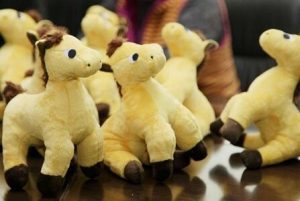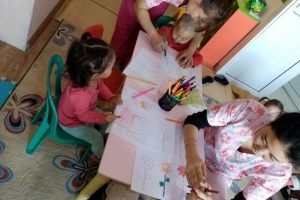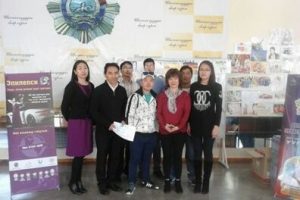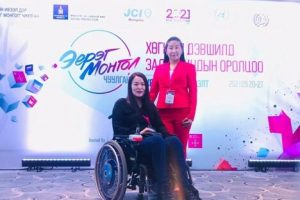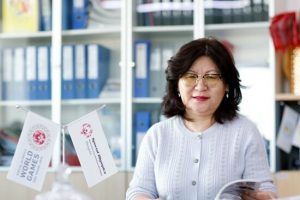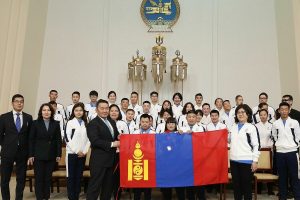By Marissa J. Smith
The “double-deel” rule, part of the Constitution, whereby only the Prime Minister and four cabinet ministers may also be MPs, has just been overturned. There are now ten new members of the Cabinet, eight of whom are current Members of Parliament.
Several former ministers are now either deputy ministers or in other posts (Ariunzaya is now senior advisor to the Prime Minister and Yondon is general director of the Erdenet Mining Corporation). It is of note that Nyamdorj, long time minister of justice and most lately, Cabinet Secretary, is now without a position (including a seat in Parliament).
Nyamdorj has been replaced with Amarbayasgalan, the young (b. 1981, age 41) general secretary of the Mongolian People’s Party. Uchral, now heading the Ministry of Digital Development and Communications, is also young (b. 1985, age 37). On the other hand, many of the new Cabinet members are returnees — Ch. Khurelbaatar (Minister of Finance in Khurelsukh’s Cabinet prior to the resignation and presidential campaign), Byambatsogt (former Minister of Justice), Choijilsuren (former Minister of Finance), and Bat-Erdene (former Minister of Defence), Sarangerel (former Minister of Health, Minister of Environment). Bolorchuluun is old enough to have worked as an agronomist in Dornod province during the state socialist system, and several others studied in the Soviet Union.
This brings the full roster, including continuing ministers to:
Prime Minister – L. Oyun-Erdene
Cabinet Secretary – D. Amarbayasgalan
Deputy PM – S. Amarsaikhan
Finance – B. Javkhlan
Defense – G. Saikhanbayar
Justice and Internal Affairs – Kh. Nyambaatar
Education – L. Enkh-Amgalan
Roads and Transport – S. Byambatsogt
Environment – B. Bat-Erdene
Foreign Relations – B. Battsetseg
Mining and Heavy Industry – J. Ganbaatar
Labor and Social Protection – T Ayursaikhan [D. Sarangerel]
Construction and Urban Development – B. Munkhbaatar
Health – S. Enkhbold
Food, Agriculture, and Light Industry – Kh. Bolorchuluun
Energy – B. Choijilsuren
Culture – Ch. Nomin
Digital Development and Communications – N. Uchral
Traffic Congestion – J. Sukhbaatar
Olympism, Physical Culture, and Sports – B. Bat-Erdene
Economy and Development – Ch. Khurelbaatar
The Mongolia Focus post on Oyun-Erdene’s first Cabinet may be found here.
New Cabinet members:
REPLACEMENTS:
Cabinet Secretary (Хэрэг эрхлэх газрын дарга): D AMARBAYASGALAN (Дашзэгвийн Амарбаясгалан) [Previous – Ts. Nyamdorj]
b. 1981, Taishir, Govi-Altai province
Communications Engineer, graduated from Mongolian State University of Science and Technology in 2002
State Academy of Management, graduated 2008
Political Scientist, graduated from Mongolian National University in 2012
Member, Citizen’s Representative’s Khural (Bayanzurkh), 2008-2016
President, Social Democratic Youth Association, 2009-2014
Member, MPRP Little Khural, 2010
MPP Leadership Council, 2015
General Secretary, Mongolian People’s Party, 2016-Present
Minister of Road and Transport Development (Зам, тээврийн хөгжлийн сайд): S. BYAMBATSOGT (Сандагийн Бямбацогт) (former MP, ran 2020, not elected) [PREVIOUS – L. Khaltar – now Deputy Minister]
b. 1974, attended secondary school in Khovd
Economist and manager, Institute of Finance and Economics, graduated 1998
Master’s degree in business studies, Maastricht university
MPRP Social Democratic Mongolian Students Association, 2006-2008
MPRP/MPP Little Khural, Member, 2005, 2007, 2010
MPP Leadership Council, 2013
Member of Parliament (Khovd), 2008 – 2020
2016, Minister of Justice and Home Affairs
(not to be confused with S. BAYARTSOGT)
Minister of Mining and Heavy Industry (Уул уурхай, хүнд үйлдвэрийн сайд): J GANBAATAR (Жамбалын Ганбаатар) [PREVIOUS – G. Yondon – appointed Director of Erdenet Mining Corporation]
b. 1973
General Director, Orgil Shopping Center, 1996-2015
Citizen’s Representative Khural (Bayangol), 2008-2012
Member of Parliament (Bayangol), 2016-Present
Minister of Labour and Social Protection (Хөдөлмөр, нийгмийн хамгааллын сайд): T Ayursaikhan (Т Аюурсайхан) (MP)
Member of Parliament 2016-Present
Deputy Speaker of Parliament 2020-Present
Replaced D SARANGEREL (Даваажанцангийн Сарангэрэл) (MP) [PREVIOUS – A. Ariunzaya – appointed senior advisor to Prime Minister] on Oct 21 2022
b. 1963
Broadcaster, Omsk, graduated 1983 and Rostov, graduated 1990
Editor, Mongolian National Broadcaster, 1990-1994
Director, TV5, 2003-2005
Secretary, MPP, 2011-2012
Member of Parliament, 2012-Present
Minister of Health, 2017
Minister of Environment, 2020
Minister of Food, Agriculture and Light Industry (Хүнс, хөдөө аж ахуй, хөнгөн үйлдвэрийн сайд): Kh BOLORCHULUUN (Хаянгаагийн Болорчулуун) (MP) [PREVIOUS – Z. Mendsaikhan]
b. 1964, completed 10-year middle school in Dornod province
Agronomist, graduated 1987
Director, Khishig Agro Company, 1992-1997
Director, Dornod Guril [Flour] Company, 1997-2012
Member of Parliament, 2012-Present
Minister of Energy (Эрчим хүчний сайд): B CHOIJILSUREN (Баттогтохын Чойжилсүрэн) (MP) [PREVIOUS – N. Tavinbekh – now Deputy Minister]
b. 1970, Tes, Uvs province
Automation and telemechanics, Urals Higher Polytechnic, Sverdlovsk (Yekaterinberg), graduated 1993
MPRP/MPP Little Khural, 2005-2015
Member of Parliament, 2012-Present
Minister of Finance, 2016
ADDITIONS – NEW (at least since 1/2021) CABINET POSITIONS:
Minister of Digital Development and Communications (Цахим хөгжил, харилцаа холбооны сайд): N UCHRAL (MP) (Ням-Осорын Учрал) [State Secretary B. Bolor-Erdene is now Deputy Minister]
b. 1985 in Ulaanbaatar
Degree in law, Ikh Zasag International University, 2007
MBA, University of Gloucestershire, 2010
Master degree in history, Mongolian University of Education, Master of History, 2012
Doctorate degree in history, Siberian Branch of the Russian Academy of Sciences, 2013
General Director, Royal Academy and Royal International Institute, 2010-2016
Member of Parliament, 2016-Present
Minister, Chairman of National Committee on Traffic Congestion (Хот хариуцсан сайд) – J SUKHBAATAR (Жамъянхорлоогийн Сухбаатар)
b. 1975, Darkhan-Uul province
Law degree, Mongolian National University, graduated 1997
Secretary and general manager, General Election Committee, 2001-2006
General Secretary, MPRP, 2016
Member of Parliament (Darkhan), 2008-2012, 2020-Present
Minister for Olympism, Physical Culture and Sports (Спорт, олимпизм хариуцсан сайд) – B BAT-ERDENE (Бадмаанямбуугын Бат-Эрдэнэ)
b. 1964, completed 10-year middle school in Khentii
Law degree, Higher Military School, graduated 1990
Naadam wrestling champion, 1988-2000
Member of Parliament, 2004-Present
Member, MPRP Little Khural, 2005-2009
Presidential candidate, MPP, 2013
Minister of Defense, 2016
Minister of Economy and Development (Здийн засаг, хөгжлийн сайд) – Ch KHURELBAATAR (Чимэдийн Хүрэлбаатар)
b. 1968, Ulaangom, Uvs Province
Leningrad Higher School of Economics, graduated 1991
University of Sydney, graduated 1998
Lecturer, economics and econometrics, 1998-2000
Advisor, economic affairs, to President Enkhbayar, 2000-2003
Chairman of Millenium Challenge Foundation, 2003-2007
Minister of Fuel and Power, 2007-2008
Member, MPRP Little Khural, 2005-2009, 2013-2015
Minister of Finance, 2017-2021
Member of Parliament (Uvs), 2008-Present
CONTINUING MINISTERS:
Deputy Prime Minister (Шадар сайд): MP S AMARSAIKHAN (С. Амарсайхан)
Born 1973, Nalaikh, Ulaanbaatar
Linguist and Lawyer, Fresno College (California) 1996;
English Metropolitan College, 1998
Los Angeles College, 2000
Master’s degree in law from Southwestern University
Staff at Science and Information Technology Center 1992-1994
Attache at the Embassy of Mongolia to PRC, 2000-2004
Manager of Investment and Foreign Trade at American Trade and Development, 2004-2007
CEO, President and Director of BOD, Oyunii Undraa Group LLC 2007-2017
Member of the Citizen Representative Council 2012-2020
Head of the budget, finance and economic committee of the Citizen Representative Council 2016-2017
Chairman of the Citizen Representative Council 2017-2019
Mayor of Ulaanbaatar 2019-2020
Member of Parliament 2020-Present
Minister of Environment and Tourism (Байгаль орчин, аялал жуулчлалын сайд): B BAT-ERDENE (Бат-Өлзийгийн Бат-Эрдэнэ)
Born 1977 in Ulaanbaatar
Korean Translator, degree in history, graduated Mongolian National University, 1999
Doctorate degree in history, Mongolian National University, 2013
General Director, “Silk Road Travel” LLC and “Air Ticket” LLC, 2003-2012
General Secretary, Social Democratic Mongolian Youth Union, 2012-2015
Head of Erdenet Development and POlicy Research Institute, 2017-2020
(Replaced N. Urtnasan in January 2022.)
Minister of Defense (Батлан хамгаалахын сайд): G SAIKHANBAYAR (Гүрсэдийн Сайханбаяр)
Born 1968 in Ulaanbaatar
Graduated from Defense University (Цэргийн нэгдсэн дээд сургууль) 1985
Public Administration and Development Institute under the Government of Mongolia, 1989
National Defense University of PRC, 2002
The Military Academy of the General Staff of the Armed Forces of the Russian Federation, 2014
Specialist officer, Department of Training, Cultural Promotion and Discipline, and Head of the working group on Information, cultural promotion disciplinary work, 1994-2000
Deputy head and Head, Department of Public Administration and Management at the Ministry of Defense, 2000-2012
Head (Үүргийг түр орлог гүйцэтгэгч) of the Department of Strategic Policy and Planning at the Ministry of Defense, 2014 – 2020
Minister of Foreign Affairs (Гадаад харилцааны сайд): B BATTSETSEG ( Батмөнхийн Батцэцэг)
Born in 1973 in aimag center of Bayankhongor province
Graduated secondary school, Darkhan
Graduated from International Relations School at MUST in 1996
Directors of publishing houses Az Khur LLC, and Munkhiin Useg LLC 1996 to 2004
Institute of Finance and Economy 2000; Maastricht University of Management in 2005
Unit Director at Foreign Investment and Foreign Trade Agency, 2005-2007
Chairman of the board, Munkhiin Useg 2007-2015
Advisor to MPP Secretary-General, 2010-2011
Administration office, and Head of Foreign Relations and Cooperation Department of MPP 2010-2012
Director of the Board of Directors of Munkhiin Useg Publishing 2020 to Jan 28, 2021
Advisor to the Minister of Finance 2015-2016
Deputy Minister of Foreign Affairs 2016-2020
Minister of Finance (Сангийн сайд): MP B. JAVKLAN ( Б.Жавхлан)
Born 1975 in Darkhan
Economist, graduated from MUST in 1997
University of California, Riverside, 2008
Indiana University, 2009
Controller, Mongolbank 1997-1999
Plenipotentiary Mongolbank Representative to Agricultural Bank 1999-2000
Senior Controller, Mongolbank, 2000-2004
Deputy Director of the Trade and Development Bank 2004-2007
Elected to MPP Little Khural, 2013
MP since 2016 to Present
Head of Parliamentary Subcommittee for Local Leadership, 2016-2020
Deputy Vice President of the Bank of Mongolia 2010-2016
Chairman of the Standing Committee on Budget of the State Great Hural of Mongolia 2020-Present
Minister of Justice and Internal Affairs (Хууль зүй дотоод хэргийн сайд): KH NYAMBAATAR (Хишгээгийн Нямбаатар)
Born 1978, in Ulaanbaatar
Teacher, Orkhon University 2000-2007
Lawyer, Mongolian Defense Lawyer’s Association
Advocate at the Mongolian Bar Association 2005-2008
Legal Adviser at the Songinokhairkhan District Governor’s Office 2008-2009
Head of the Public Administration Department at the Songinokhairkhan District Governor’s Office 2009-2012
Acting Director of Governor’s Office, Songinokhairkhan, 2011-2012
Chairman of Songinokhairkhan District Citizens’ Representatives’ Khural 2012-2016
Deputy Chairman, Songinokhiarkhan District MPP Committee
Vice President of MPP SDM Youth Association 2015 – ?
Member, Ikh Khural (Songinokhairkhan) 2016-2020
2016(?) income declaration — 30 million MNT income, savings of 15 million, shares in Erdenes Tavan Tolgoi and Best Drilling
(Sanders 2017, 633)
Chairman of the State Great Hural’s Standing Committee on Legal Affairs 2019-2020
Member of Ikh Khural, 2020 – 2024 (Songinokhairkhan)
Minister of Construction and Urban Development (Барилга, хот байгуулалтын яам): B MUNKHBAATAR (Бэгжавын Мөнхбаатар)
Born, 1975, Ulaanbaatar
University of Science and Technology 1993
Mongolian State University, East London University business school 2004-2006
Mongolian Social Democratic Students’ Association 1998-2001
Senior Political Worker, Ulaanbaatar Committee of MPP 2001-2002
Deputy head, State Administration, Management, and Cooperation Department, Ministry of Education, Science, and Culture 2002- 2004
Head, External Relations Department, Ministry of Education, Science, and Culture 2002 – 2004
Director, City Policy and Planning Strategy Office, Ulaanbaatar Governor’s Secretariat 2006-2008
Chairman, Council of the Ulaanbaatar Section of the Mongolian Social Democratic Youth Association 2008
Governor, Bayanzurkh District 2008
Deputy Governor of Ulaanbaatar (one of four) 2008 – 2012
Deputy Governor of the Capital City in charge of Construction, Urban Development and Infrastructure 2008-2012
MPRP Little Khural 2009 – ?
Chairman, UB MPRP Committee 2009 -2012
Member, MPRP Leadership Council 2009
Candidate, Ikh Khural Election, MPP, Bayanzurkh and Nalaikh 2012
Deputy Minister of Population Development and Social Welfare 2014-2015
Member, Little Khural of MPP 2010 – 2016(?)
(Sanders 2017, 601)
Board Member, Oyu Tolgoi LLC in 2016-2018
CEO of Erdenes Oyu Tolgoi 2016 – 2018
Deputy Minister of Construction and Urban Development 2018-20
Minister of Education and Science (Боловсрол, шинжлэх ухааны сайд): MP. L ENKH-AMGALAN (Л. Энх-Амгалан)
Born 1970 in Khuvsgul; graduated secondary school in Murun
Economist and IT Engineer, Graduated from the University of Saint Peterburg in 1992; Dakota University [sic] in USA the in 1996; and Hangdon University in 2002
Director-General of Interpress LLC 1995-1996
Editor in Chief at Il Tovchoo Newspaper, Montsame Agency 1992-1995
Vice President of MCS Group, Board of Directors of Unitel Group 1996-2012
Advisor to the Prime Minister of Mongolia, 2011-2012
Member of Executive Committee of the MPP, 2012-Present
Member of Parliament since 2012-Present
Chairman of the Standing Committee on Education, Culture and Science, Deputy Speaker of the State Great Hural, 2016-2017
Deputy Speaker of the State Great Hural 2017-2020
Chairman of the Standing Committee on State Structure of the State Great Hural from 2020
Ministry of Culture (Соёлын сайд): CH NOMIN (Чинбатын Номин)
Born 1983, Ulaanbaatar
Daughter of Chinbat, Director of Gatsuurt Company (gold mining and agriculture)
University of East Anglia in 2003, Economics and Accounting 2006;
Director of External Relations of the Gatsuurt Group, 2006-2007
Manager, Terelj Hotel (owned by Gatsuurt), 2007
Director of “Terelj Suikh” LLC 2008-2011;
Harvard Business School 2018;
Executive Director of Mongol TV 2011-to Present
Minister of Health (Эрүүл мэндийн сайд): S ENKHBOLD (С. Энхболд)
Born 1979 in Ulaanbaatar
Graduated from Health Sciences University in 2004; 2006; 2020
Masters in Medical Science, Nagoya, Japan
Director of the Imaging and Radiology Department at the State Central Hospital #1 2007-2019
Director of the State Central Hospital #2 since 2019-present
Sources of information for this post include:
“New members of cabinet appointed,” Montsame
“Шинэ сайд нарын амлалт,” news.mn
“ЗГ: Л.Халтар, Н.Тавинбэх нар дэд сайдаар томилогдов,” news.mN
Current Members, parliament.mn
МОНГОЛ УЛСЫН ЗАСГИЙН ГАЗАР (mongolia.gov.mn)
Alan J. K. Sanders’ Historical Dictionary of Mongolia, Fourth Ed., Lanham: Rowman & Littlefield, 2017)
“Дашзэгвийн Амарбаясгалан,” Википедиа нэвтэрхий толь (wikipedia.org)
“Ням-Осорын Учрал,” Википедиа нэвтэрхий толь (wikipedia.org)
“БОАЖ-ын сайдад Б.Бат-Эрдэнийг томилохоор болжээ,” News.mn

 Follow
Follow
